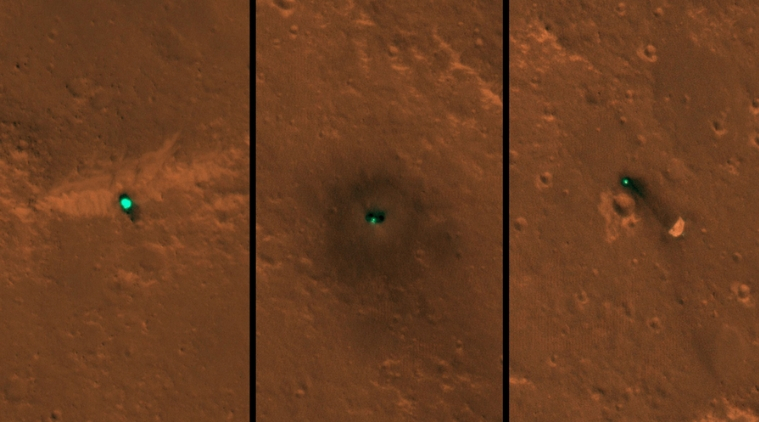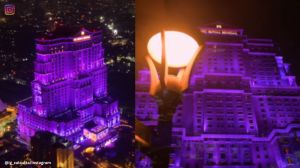- India
- International
NASA photographs Mars InSight lander from space
The HiRISE aboard Mars Reconnaissance Orbiter spotted Martian landscape and ground around the lander.
 HiRISE also spotted the lander’s heat shield and parachute, on December 6 and again on December 11. (Image: NASA)
HiRISE also spotted the lander’s heat shield and parachute, on December 6 and again on December 11. (Image: NASA)
NASA has pinpointed the exact landing location of its newly launched InSight lander, using a powerful camera onboard another of the agency’s spacecraft, hovering around the Red Planet. On November 26, InSight landed within a 130 km ellipse at Elysium Planitia on Mars. However, there was no way to determine exactly where it touched down within this region.
The HiRISE (which stands for High Resolution Imaging Science Experiment) aboard Mars Reconnaissance Orbiter (MRO) spotted Martian landscape and ground around the lander on Thursday, NASA said in a statement. It released three new features on the Martian landscape, which appear to be teal. However, it is not their actual colour, but light reflected off their surfaces caused the colour to be saturated.
“The ground around the lander appears dark, having been blasted by its retro-rockets during descent. Look carefully for a butterfly shape, and you can make out the lander’s solar panels on either side,” NASA said.
HiRISE also spotted the lander’s heat shield and parachute, on December 6 and again on December 11, NASA said. They are within 1,000 feet (several hundred meters) of one another on Elysium Planitia, the flat lava plain selected as InSight’s landing location. Meanwhile, the InSight lander also took a first selfie using the spacecraft’s robotic arm on December 6.
It snapped a mosaic made up of 11 images, which includes the lander’s solar panel and its entire deck, including its science instruments, weather sensor booms and UHF antenna. The lander also sent another set of mosaic composed of 52 individual photos, showcasing the “workspace” — the approximately 14-by-7-foot (4-by-2-metre) crescent of terrain directly in front of the spacecraft, NASA noted.

InSight will study the interior of Mars, and will explore valuable science as NASA prepares to send astronauts to the Moon and later to Mars. The spacecraft will operate on the surface for one Martian year, plus 40 Martian days, or sols, until November 24, 2020.
More Tech
Best of Express
Apr 18: Latest News
- 01
- 02
- 03
- 04
- 05







































